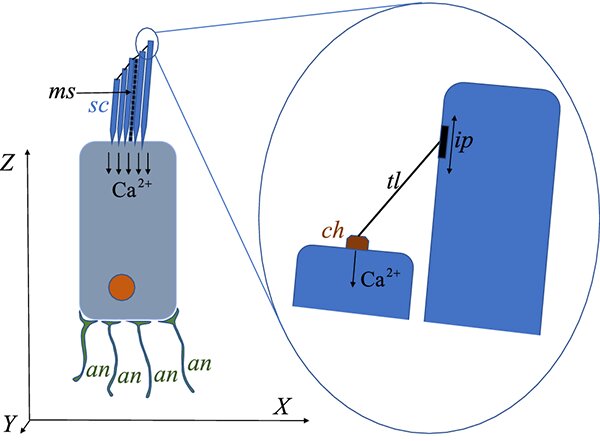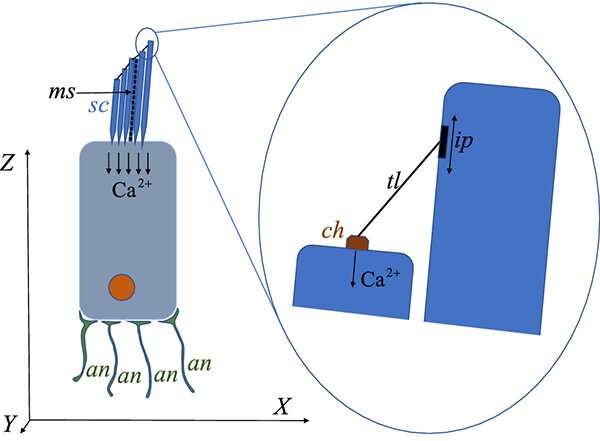

Statistical mechanics shows that some animals may be able to perceive Earth’s magnetic field with bundles of microscopic hairs in their inner ears.
The exact mechanisms animals use to sense the direction of Earth’s magnetic field have long remained a mystery. One leading theory suggests that this ability is tied to bundles of microscopic hair cells in the inner ears. Through new research published in The European Physical Journal Special Topics, Kirill Kavokin at St Petersburg State University, Russia, uses statistical analysis to show that just about 100 of these hair cells could act as effective biological compass needles, allowing animals to accurately sense the magnetic field surrounding them.
Named “magnetoreception,” this unique sensing ability is found across a wide array of vertebrate species: from migrating birds to burrowing rodents. Several mechanisms have been proposed to explain this ability—but despite over 50 years of research, none of these have yet been definitively observed in nature.
One leading theory is based on bundles of hair cells in the inner ear, named “stereocilia.” According to this idea, stereocilia are attached to nanocrystals of magnetite: an iron-based mineral which can become permanently magnetized, aligning itself with Earth’s magnetic field. As the animal’s orientation changes, magnetite would then force changes in the orientations of the stereocilia attached to it. These changes could then be picked up by mechanoreceptors: nerve cells which can detect mechanical pressure—providing the animal with a physical sensation of a magnetic field. Still, it is uncertain whether these nerve cells are sensitive enough to detect such subtle changes.
To explore this idea further, Kavokin studied the fluctuations of stereocilia under the framework of statistical mechanics, which applies the mathematical language of statistics to large groups of microscopic objects.
Through his analysis, Kavokin showed that stereocilia bundles can indeed act as highly sensitive compass needles, with just around 100 hair cells needed for mechanoreceptors to pick up their fluctuations. This intriguing result could bring biologists a step closer to understanding the origins of magnetoreception, and finally identifying the mechanisms responsible in nature.
Gene therapy rescues malfunctioning inner ear hair cells that transduce sound
K. V. Kavokin, Compass in the ear: can animals sense magnetic fields with hair cells?, The European Physical Journal Special Topics (2022). DOI: 10.1140/epjs/s11734-022-00654-y
Citation:
Tiny animal hairs could act as sensitive compass needles (2022, September 21)
retrieved 21 September 2022
from https://phys.org/news/2022-09-tiny-animal-hairs-sensitive-compass.html
This document is subject to copyright. Apart from any fair dealing for the purpose of private study or research, no
part may be reproduced without the written permission. The content is provided for information purposes only.